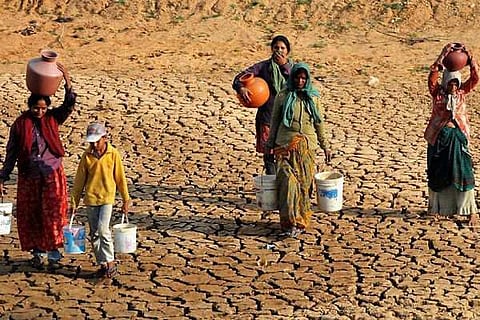

El Nino, the climate phenomenon responsible for significantly changing weather patterns across the globe, has ended, according to the Australian Bureau of Meteorology.
El Nino, meaning “Little Boy” in Spanish, is associated with a rise in surface temperatures in the Pacific Ocean, which then impacts other weather patterns. The present phenomenon that has lasted nearly two years is considered one of the strongest El Nino in 20 years. Pradeep John, a weather blogger who runs ‘Tamil Nadu Weatherman’ says, “Extreme El Nino years occur once in 15 to 20 years with 1997 and 1982 being strong El Nino years.”
El Nino has been responsible for severe droughts and soaring temperatures, with the mercury touching 51 degrees Celsius in Phalodi in Rajasthan last week. On the other hand, El Nino has also precipitated storms like Cyclone Roanu, which gather more strength as they travel across warm waters before making landfall. Climate experts say, El Nino peaked in December 2015, and was partly responsible for the floods in Chennai.
So what follows El Nino?
“Strong El Nino years have always been followed by La Nina. History has shown this. Following 1997 and 1982, we have seen La Nina form,” notes John.
The Australian Bureau of Meteorology suggests that La Nina is likely to form between June and August based on international climate models.
La Nina, or “Little Girl” in Spanish, is associated with cooler sea surface temperatures in the Pacific Ocean. GP Sharma, Vice President and Meteorologist at Skymet says, “La Nina is the inverse of El Nino in terms of ocean-atmospheric conditions.” Both John and Sharma observe that with El Nino having collapsed, oceans are in a transition or a neutral phase. The shift to La Nina is gradual and is a long-drawn process.
Both IMD and Skymet have forecast an above-normal South-West Monsoon after two years of successive failures. Sharma says that the collapse of El Nino is a significant factor in meteorologists forecasting an above-normal monsoon. Unlike his Australian counterparts, however, he does not expect La Nina to form before the monsoon retreats in India.
La Nina’s effect on India
The Tamil Nadu Weatherman says La Nina conditions can last for two years and is associated with a good monsoon. However, John and Sharma caution that excess rainfall can cause events or episodes of flooding. The weather blogger says that the North-east monsoon, which covers over 50 per cent of Tamil Nadu during October to December, isn’t dependent solely on La Nina conditions and it is too premature to predict the rainfall pattern.